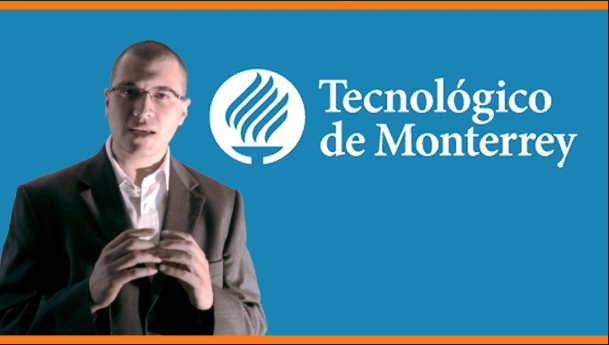Recently, I spoke to the executive education program for the Instituto Tecnológico Y Estudios Superiores De Monterrey (ITESM) in Nuevo León, Mexico. It allowed me to work for two days with 50 CEOs and 250 of their managers. As a business anthropologist, this was a wonderful opportunity to share with them new ways to approach their business growth strategies.
My focus was twofold:
1. Could we help them find new market space?
2. How could they manage business change, lead change initiatives and overcome the inevitable hurdles?
The ITESM program brings together these carefully selected CEOs nine times a year for workshops and speakers such as myself. The goal is to continually bring them  new ideas, train them, develop their ability to sustain growth in fast changing times, and build their leadership and change management skills.
new ideas, train them, develop their ability to sustain growth in fast changing times, and build their leadership and change management skills.
What was so exciting was how open they were to see things with “fresh eyes.” Each one asked me, How could they find new markets? Where were nonusers or new solutions to solve unmet needs?
The businesses I worked with were in a wide range of industries. León is a center for shoe manufacturing, as well as for the tanning of shoe leather. It is also one of the central areas for automobile assembly and the wide range of companies that support the automotive industry. Additionally, there were innovative trucking companies, software developers, family firms in the construction sector, and human development businesses in attendance, reflecting the energy and opportunity in today’s Mexican economy.
At Simon Associates Management Consultants, we believe, as did John Seely Brown when he said: “The way forward is all around you.” All too often, business leaders, managers and their staff are looking straight at new possibilities but cannot see them. They are wearing business “blinders.” And, their habits are driving them.
So how could these CEOs and their teams avoid wearing blinders? And how can you see past the obvious to find new markets, customers and innovative opportunities?
Let’s consider three things that we worked through together:
1. Why can’t we see what is coming at us?
2. Why do we typically fight the new and protect the old?
3. What can we do to open ourselves, and our businesses up for growth in markets that we discount, avoid, and reject?
Why can’t we see what is right before us?
First, there is the problem of the brain: It hates to change. On top of that, the brain is a habit-driven mass that uses25% of the body’s energy. Learning new things is work, and the prefrontal cortex where that new learning takes place literally creates chemical reactions that tell the brain to stop that—it is bothersome.
Plus, your brain has a mind map of reality that helps it sort out “stuff” that is coming towards it—i.e., new ideas. If new facts start to disrupt the story, it needs to create a new story, which is work.
Why do we typically fight the new and protect the old?
These CEOs immediately gravitated to the issues we hear all the time at SAMC. “Changing our organization is difficult.” “Our folks don’t understand what has to change, why it must, and how to manage it.” “Our people aren’t motivated.” “We are more comfortable doing what we have always done—and then complaining about why it is no longer working.” And one manager said: “I have to install new systems and all 500 employees are fighting me. Can’t they see why this will be so much better?”
You will find, as we at SAMC know, that the beginning of new ways to do things, or a change in your systems or processes, or the opening up of a new market space, or any type of change will have four significant hurdles emerge immediately. It’s just amazing how fast the obstacles arise. There is no shortage of research on why people fight change, but these four hurdles summarize them quite nicely. You can read more about them in our work on Blue Ocean Strategy or watch a webinar I conducted on the subject here:
1. Cognitive Hurdle: This is when people just refuse to believe that what you are saying or suggesting has real merit. It doesn’t fit their mindset about reality, and it is easier to say “that doesn’t make sense.” Even if they give your innovation or change process lip service, they most often stick to their old ways of doing things because they “just make more sense.” You must overcome this hurdle quickly by helping your staff see why the “undesirable can become highly desirable.” What will really help is to engage them in the discovery process.
2. Motivational Hurdle: This is where people just don’t want to change. They are happily pursuing their daily routines and have been successfully doing them for years. The motivations to learn something new, change what has worked before, admit that the new adds real value are all missing. So you need to engage the people in your business. Identify the key “resistors” and help them lead the process. Also consider over-investing in their training and skill development.
3. Resource Hurdle: If you manage to get people motivated and they finally believe there is a need for change, they will then tell you that there are no resources to support your new methods or systems or ways of doing things. They are certainly not going to volunteer their resources. Prepare yourself for this hurdle by providing special-purpose resources, investing, eliminating and reducing some sacred or well-established costs to create and raise resources for the new ones.
4. Political Hurdle: Think ahead about who is going to put their political skills into play in order to undermine the change process. Educate these people early. (Keep your friends close, your enemies closer.) Help them lead. Build the company’s social order in ways that capitalize on their influence, decreasing their ability to derail the forward movement of change.
What can we do to open up ourselves, and our businesses, for growth in markets that we discount, avoid and reject?
I began by asking these CEOs to tell me about situations that had arisen where they had discounted the possibilities that a request or a new idea or a prospective client might have offered to their businesses. As they discussed these, I asked them to dig deeper into why they did not find these new possibilities of particular value. What repeatedly came through were these responses:
• “It didn’t fit into our current business particularly well.”
• “Our core focus was not in these new directions.”
• Or, “those aren’t the customers we want.”
Well if “fit” is the best criteria for a growth strategy, it might be hard to find new market opportunities all around you. Why? Because you begin to look narrowly at things that are familiar. Perhaps you look for a line extension or more of the same to add value, or focus on a potential acquisition to expand your current client base. Those are all things you are familiar with today and understand how to build into your current business model.
But, each of these CEOs realized that those discounted opportunities could have become a new, even a large, untapped market if only they had seen it with different “eyes.” Perhaps those possibilities just needed a different approach. Not one that fit “us” but one that reflected the needs of “our potential customers.”
Refocus on unmet needs and nonusers
What began to emerge over the course of the two days was a new focus on potentially unmet needs of a market that was asking for a new solution to an old problem or an approach to a new issue that had emerged that had no great solution, as yet.
What the CEOs began to realize was that they needed to step back and look at new business possibilities with fresh eyes.
The result? Together, we built a discovery process that could take them out into new markets, kind of like an anthropologist. Without their preconceived theories or ideas, they now “saw” that they might have listened differently to those clients or non-clients who were asking for things in different ways.
One CEO stopped me as we ended the sessions. How could he begin to “see, feel and think” in new ways? I suggested that he go visually exploring. Stop to listen to people discuss their challenges and pain points. He shouldn’t worry if he had a solution as yet. But could he create a big business opportunity if he simply focused on consumers’ needs, not what his factory produced today?
Perhaps you are ready for a SAMC workshop to help you and your management team “see, feel and think” in new ways about how to grow your business.
To read more, check out these blogs:
- The Five Best Tools to Find Your Blue Ocean Strategy
- Your Business is Doing Great, But Are You On The Brink?
From Observation to Innovation,

Andi Simon, Ph.D.
Corporate Anthropologist | President
Simon Associates Management Consultants
Info@simonassociates.net
@simonandi



